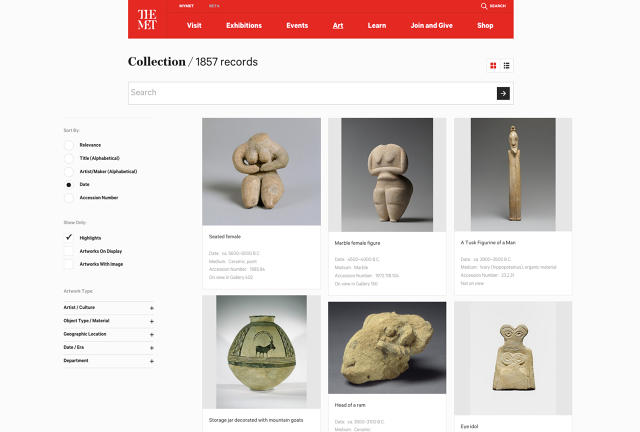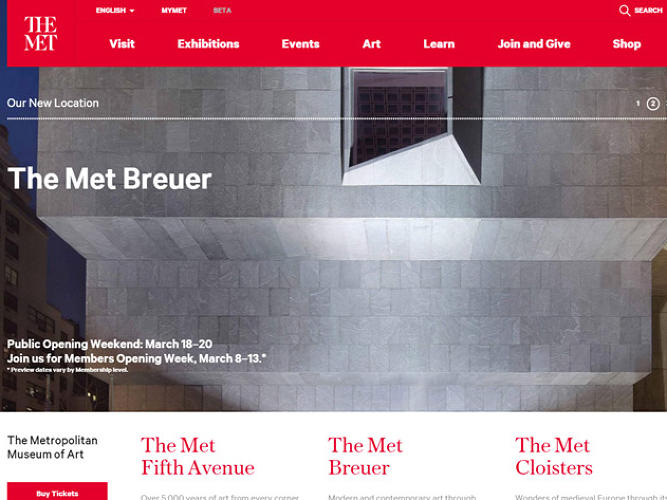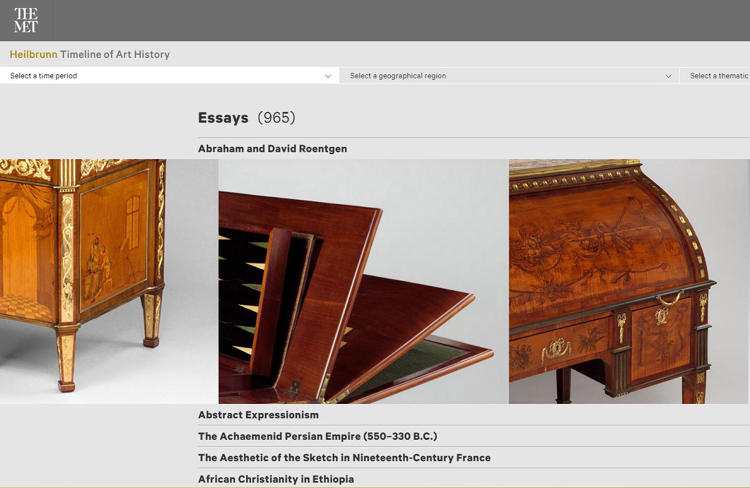How A 145-12 months-old art Museum Stays related in the Smartphone Age
walking around big apple’s Metropolitan Museum of art, that you may’t help but discover a sample. though the world’s largest art museum welcomes various crowds of people day by day, most guests have one thing in widespread: they may be keeping smartphones.
it’s possible you’ll assume this is able to be an issue for an establishment whose survival is dependent its means to seize our consideration within the offline world. but the Met, which opened in 1870 and is increasing into its third place on March 18, is able to embody smartphones as every other opportunity to deliver great artwork to the public.
This week, the Met finds its newest digital undertaking, a wholly redesigned, simplified website with a mobile-pleasant center of attention. The redesign, which carries over into the museum’s apps for iOS and Android, is timed to help inaugurate the brand new Met Breuer area when it opens next month in ny.
For the Met, this newly refreshed cell presence now not only helps it embody the smartphone generation, nevertheless it lays the groundwork for future projects that assist blend digital and bodily areas.

“folks inquire from me: what’s your biggest competition?,” says Sree Sreenivasan, the Met’s chief digital officer. “Is it MoMA? Guggenheim? Our competitors is Netflix. sweet Crush. it can be existence in 2016.”
Staying competitive requires a multipronged way: in addition to cellular apps and a website that serves millions of visitors across many devices, the Met’s two-person social media team must strategically channel their limited vitality into structures like facebook, Twitter, Pinterest, Instagram, and SoundCloud.
“We consider that each person on this planet has one thing of passion right here,” says Sreenivasan of the museum’s large assortment, which spans 5,000 years and greater than 2 million sq. ft. “The query is: How do you surface those things? How do you get them to see them?”
no longer tremendously, social media is a big piece of that puzzle. With minimal investment into issues like centered commercials, the Met managed to reach over one hundred and one million folks on fb closing year. It has even branched past YouTube—where the museum’s videos got nearly 7 million views last 12 months—and has begun broadcasting one of the museum’s occasions on Periscope.
Instagram, an evident opportunity for any visually oriented institution, sees a flurry of picture-sharing job at the Met everyday. The museum’s personal Instagram account boasts 1.1 million followers. “We’re pro-selfie, but not pro-selfie stick,” Sreenivasan says of the museum’s decision to ban the photo-taking sticks final year. every photo shared from the museum is a free commercial for the Met. indeed, the digital team watches as users tag every other in Instagram remark threads, vowing to come back investigate cross-check a given piece of artwork for themselves.
As Sreenivasan and the digital workforce watch the stats evolve, they may be able to’t assist however discover one giant quantity: ultimate yr, ninety one% of tourists to Met introduced a mobile tool with them. that provides them plenty of self assurance that constructing out cellular features in the museum itself shall be neatly well worth the investment. however first issues first: The Met’s web page, which had 33 million guests ultimate 12 months, needs a brand new design that works flawlessly on units large and small.
the new responsive site, which coincides with a recent, reasonably controversial rebranding of the Met, took about nine months to finish. It includes some anticipated features: a simplified, more intuitive navigation—the “collections” button is now merely known as “artwork”—in addition to pages that are not most effective cleaner, however better optimized for serps. the theory is to unfold the museum’s digital content, together with a whole bunch of lots of digitized and annotated artistic endeavors, as far and as broad as that you can imagine.

In a number of weeks, the Met may even launch a redesigned map of its museums, in order to, from right here on out, exist on digital structures first prior to it gets printed and repurposed in the analog world. This challenge objectives to centralize information about the Met’s massive indoor maze of galleries, together with their geographical coordinates, with the purpose of creating out indoor GPS and approach-finding experiences someday.
while many of these improvements appear like no-brainers in 2016, instincts like these do not always come naturally to institutions which can be nearly 150 years previous.
“They have been involved: if you happen to show the artwork on-line, then why would people come to the museum?” says Sreenivasan. the new web site lets individuals download excessive-decision images and use them without cost in non-industrial work. “Shouldn’t they be crappy pictures? I consider that the more you convey, the extra individuals will need to come.”
Is that true? it can be not at all times simple to trace the impact of digital products on real existence task—how many individuals does a neatly-hashtagged Instagram picture of a Hercules statue in reality carry to the higher East aspect? but the museum’s foot site visitors is encouraging; last 12 months, the Met introduced in a record-breaking total of 6.three million people.
So while people of all ages are increasingly more glued to their gadgets, that does not essentially imply they’re much less engaged with their setting. The Met’s new digital initiatives purpose to make sure these cellular displays can improve the enjoyment of art, fairly than detract from it.
“We live in an experience world,” says Sreenivasan. “folks need experiences.”




fast company , read Full Story
(38)









